
15311826613
Click to add WeChatAs a hard currency, gold can avoid risks and hedge. According to different gold mineralization conditions, some are precipitated in the ocean, activated and migrated, and then transported by river water to form stable river sand, which can be turned into gold after salvaging and washing. However, the existence of gold in rock gold ore cannot be eliminated by this method. So how to extract gold from the ore into gold? Let's take a look at the available gold extraction processes.
At present, there are several methods to extract gold from ore, including gravity separation, flotation, hydrogenation leaching, heap leaching, thiourea, amalgamation and gold refining.
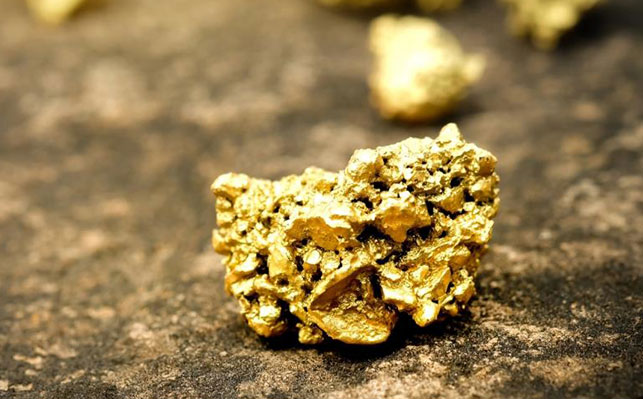
Gravity separation for gold extraction is generally suitable for processing placer gold ore. For the extraction of gold particles in the ore, it is necessary to first grind and separate the mineral monomers before separation. According to the density difference between gold ore and other gangue minerals, gold can be recovered by gravity separation equipment.
The gravity separation process is simple and the cost is low, but in vein gold ore, gravity separation is rarely used, mainly because gravity separation has a poor effect on the separation of fine particles of monomer dissociation, which will reduce the gold recovery rate. However, it can be used as an auxiliary means of gold extraction to improve the gold recovery rate.
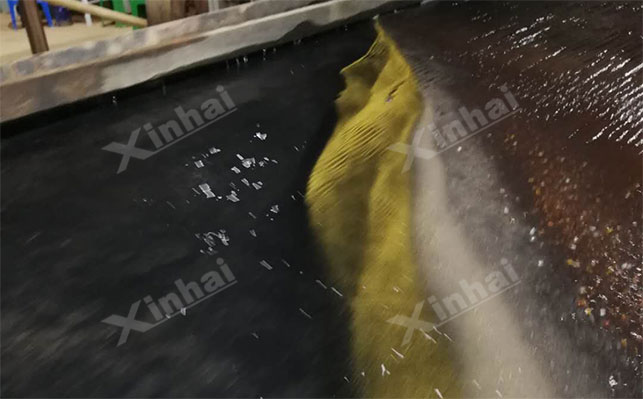
Flotation is the main method for gold extraction from vein gold ore. However, this process does not separate gold from the gangue, but separates the sulfide ore containing gold from the gangue. If gold and sulfide minerals are closely intercalated or gold is wrapped by sulfide minerals, the process of enriching gold by flotation of sulfide ore is easy to achieve, that is, the existence of intergrowths or inclusions of gold and sulfide minerals is conducive to the enrichment of gold. If gold and gangue are closely related, it is necessary to separate gold from gangue minerals through grinding and then flotate to enrich gold. At this time, sulfide minerals are equivalent to carrier minerals for gold. (Flotation gold extraction process)
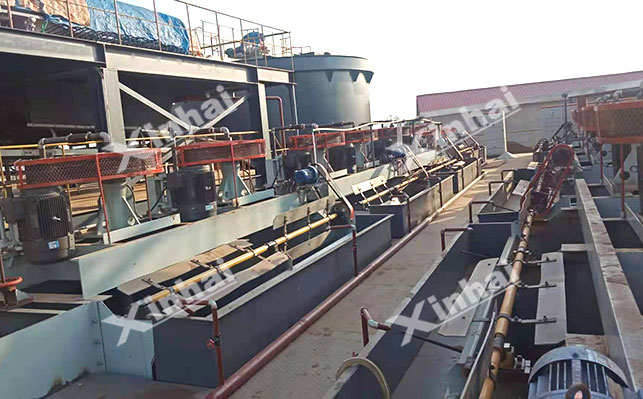
When the recoverable elements in the ore include heavy metal sulfide ores such as copper (or lead, zinc), the copper (or lead, zinc, etc.) in the ore can be recovered by flotation to enrich gold in the corresponding sulfide minerals, and gold reaches the pricing standard to achieve associated recovery, that is, the flotation product is a copper (or lead, zinc) concentrate containing gold. If the only recoverable element in the ore is gold, the general sulfide minerals are pyrite and arsenopyrite, and the flotation product is gold concentrate.
Cyanide leaching is an older method for gold extraction. It uses hydrogenated solution to react with gold under aerobic conditions to generate a monovalent gold complex and then dissolve it into the solution. The dissolution of gold in cyanide consists of two stages. The first stage is that gold is dissolved and hydrogen peroxide is produced; the second stage is that the produced hydrogen peroxide cooperates with cyanide to dissolve gold again. This method of gold extraction is not only low-cost and high-recovery, but also more adaptable to ores. The currently available methods are divided into two categories, one is conventional hydrogenation gold extraction (CCD method and CCF method), and the other is non-filtered cyanide carbon slurry gold extraction (CIP method and CIL method).
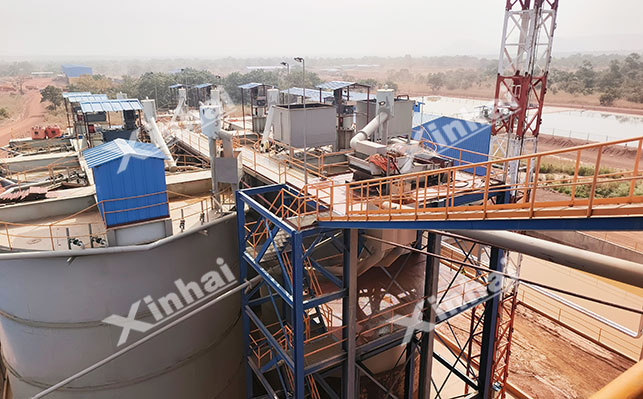
CCD method: uses activated carbon as the adsorption medium for gold, directly adsorbing gold during the cyanide leaching process without filtering and washing steps, and is mostly suitable for processing muddy oxidized ores. The process is to pre-treat the pulp first (remove Fe2+, Cu2+, Zn2+, S2-, Fe3+ impurities, etc. in the mineral), then perform hydrogenation leaching, use cyanide as a leaching agent, dissolve the gold in the ore into the solution, and use activated carbon to adsorb the gold in the solution after leaching to achieve gold enrichment. After enrichment, zinc powder is replaced and smelted to obtain finished gold.
CCF method: It uses a thickener for continuous countercurrent washing, and then uses zinc powder replacement precipitation to recover gold. It is mostly suitable for cyanidation plants that process flotation gold concentrate or amalgam and gravity tailings. The process is to pre-treat first, then use cyanide as a leaching agent under aerobic conditions to dissolve the gold in the ore into the solution, and use a thickener for continuous countercurrent washing after leaching.
CIP (carbon-in-slurry) method: Gold can be directly adsorbed from cyanide slurry through activated carbon. It can operate continuously and is suitable for gold extraction from gold-bearing ores of different types and particle sizes. The process is to pre-treat the finely ground slurry, then add cyanide (NaCN), dissolve the gold under aerobic conditions to form a complex, and then add activated carbon to adsorb the gold ions. During the leaching process, the slurry needs to be stirred continuously to ensure the uniform distribution of cyanide and oxygen, and the full contact between the activated carbon and the gold-containing solution. Then, a screen is used to separate the gold-loaded carbon from the tailings. The gold-loaded activated carbon obtained is desorbed and replaced by zinc powder to obtain gold. (Carbon slurry gold extraction process)
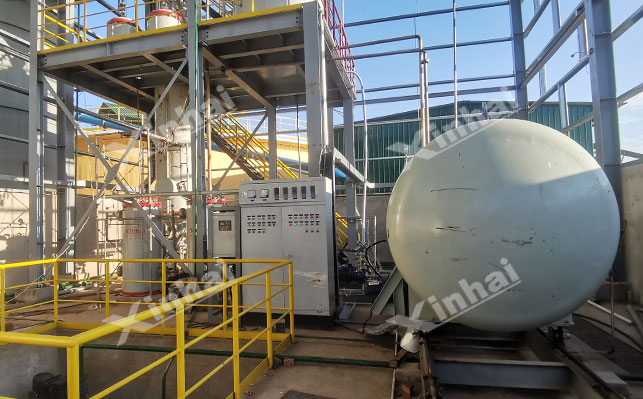
CIL (carbon leaching) method: Similar to the CIP method, the difference is that this method adds activated carbon to the ore slurry before leaching the ore, eliminating the slurry filtering and washing steps, simplifying the entire gold extraction process. (Recommended: Carbon leaching gold)
Heap leaching gold process is mainly used for low-grade oxidized ores. By spraying chemical reagents on the ore heap, the gold is dissolved and recovered. This method has obvious economic effects and has opened up a way for the development and utilization of low-grade oxidized ores.
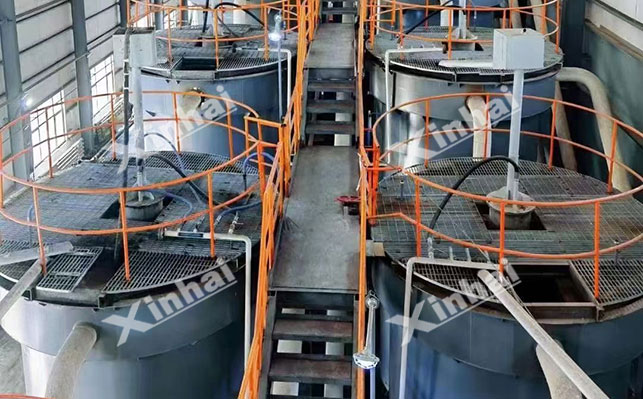
Thiourea gold extraction is mainly carried out under acidic conditions. Thiourea is used as a gold leaching reagent to form soluble complex ions with gold and thiourea, thereby extracting gold. This method is a complex liquid-solid phase reaction system composed of multiphase reactions such as adsorption, diffusion and mass transfer. Its adsorption rate is very fast, four to five times that of cyanide leaching, but thiourea is expensive.
The amalgam method mainly uses the characteristics of mercury and gold forming an alloy to collect gold particles. This method has good effect and low cost, and is mostly suitable for extracting gold from natural gold particles. Although this method is efficient, it causes serious pollution to the surrounding environment and is currently being replaced by other methods.
The main purpose of gold refining and gold extraction is to remove impurities from the selected crude gold. In addition to gold electrolytic refining and full extraction purification, there are also high-temperature chlorination and general chemical methods. For example, high-temperature chlorination is a crude refining method that chlorinates and separates impurities by introducing chlorine gas into the crude gold melt to produce high-purity gold.
The above are several common methods for gold extraction from ores. No matter which method is used, it must be determined according to the properties of the gold ore. It is recommended that you first conduct a mineral processing test, and then design a suitable gold ore extraction process based on the test analysis.